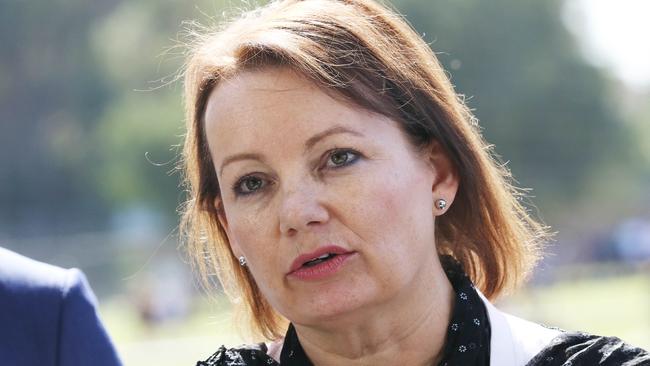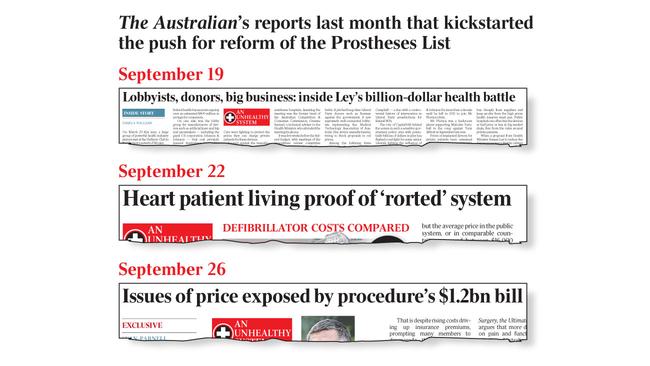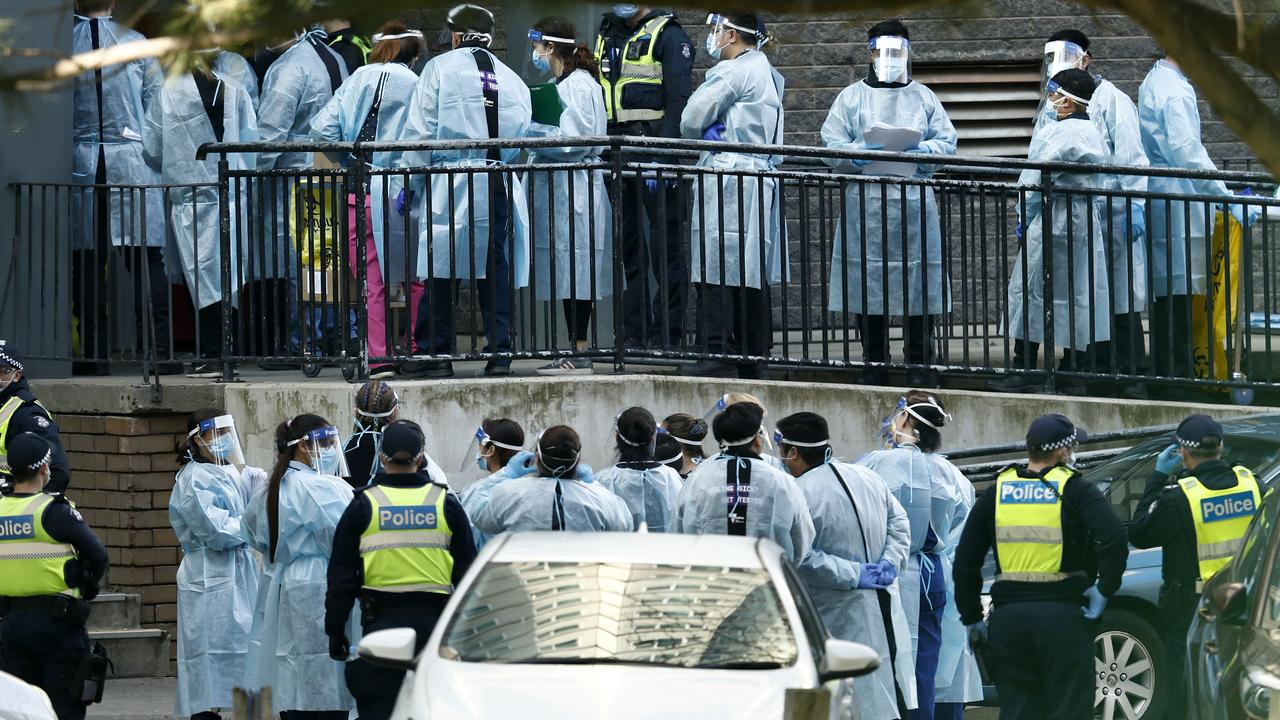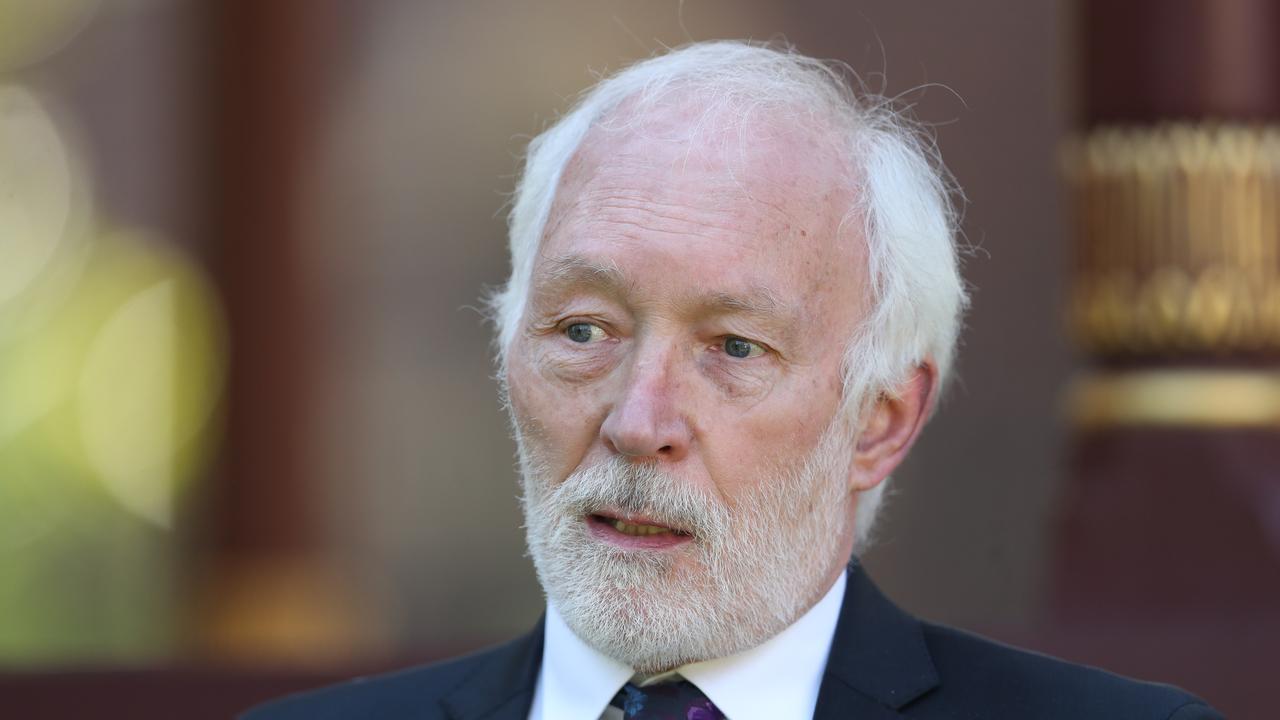Health cost cuts to ease pain on premiums
Health Minister Sussan Ley will today reveal cuts of $86m a year to the price of medical implants.

Health funds will be under pressure to rein in insurance premiums after Health Minister Sussan Ley today reveals cuts of $86 million a year to the price of medical implants such as artificial knees, hips and pacemakers.
Under long-awaited reforms to the Prostheses List, which dictates how much insurers pay for health fund members to receive a range of surgically implanted devices, the federal government will first target those areas with the most inflated prices.
Ms Ley has taken advice from an industry working group, which highlighted how the regulated prices of cardiac devices, intra-ocular lens systems, hips and knees were “significantly higher, in many cases, than market prices based on available domestic and international data”.
“These categories are considered appropriate for initial consideration for benefit reduction because they have large volumes and benefits paid, with relatively high levels of competition among prostheses sponsors,” the working group concluded.
Legislating to cut the price of cardiac devices and intra-ocular lenses by 10 per cent, and hip and knee prostheses by 7.5 per cent, is expected to save insurers $86m in the first year and $394m over five years.
The move comes after a series of reports in The Australian last month about inequities in prostheses prices charged in the public and private hospital systems. Current price distortions mean a pacemaker on the Prostheses List can cost double — or $26,000 more than — the same device available for purchase in the public system. Similarly, hip components can cost about $4000 in the public system but $6000 in the private system, while a coronary stent that costs a WA public hospital $1200 would cost an insurer privately $3450.
Ms Ley told The Australian the price cuts were “an important first step” in the government’s efforts to improve the value of benefits on the Prostheses List. “We have taken action as promised and it’s now time for insurers to deliver on their promise to substantially lower premium increases for their customers next year,” she said.
Health funds will next month apply to increase premiums from April 1.
While health funds have long lobbied for reforms to the Prostheses List, they are likely to clash with the government over the scale of potential savings.
It is understood Ms Ley wants to push insurers to account for even larger, future savings when calculating premiums, however some funds claim to have already factored for reforms in the last premium round.
Insurance premiums have been rising by about 6 per cent a year on average, while the value of the government rebate has been eroding, prompting many members to laden their policies with higher excess payments, exclusions and restrictions.
Looking to government to help cut costs, industry lobby Private Healthcare Australia speculated on prostheses savings of up to $800m a year, a figure other stakeholders claimed to be exaggerated.

In the June quarter, according to the Australian Prudential Regulation Authority, health funds paid out $66m for 30,833 knees, $53m for 25,740 hips, $85m for 14,130 cardiac devices and $25m for 80,385 ophthalmic devices for members in the private sector.
The working group warned that “an across-the-board reduction in prostheses benefits would be inappropriate” and it was mindful of the potential impact on smaller manufacturers, the threat of popular prostheses being withdrawn, and the risk that out-of-pocket payments for patients might increase.
Describing the planned price cuts as “modest and sensible,” Ms Ley said she would introduce legislation changing the listing of 2440 devices from February 20.
“These cuts are being made because of inflated prices on the Prostheses List, compared to public system prices,” Ms Ley said. “Consumers have a right to question the value of their private health insurance when an item, such as a defibrillator, costs about $17,000 in the public system, yet their private health insurer is required to pay $48,000.”
Ms Ley reportedly pushed for cabinet to cut prices on the Prostheses List earlier this year but the government instead went to the election promising a revamped Prostheses Listing Advisory Committee.
The Australian yesterday revealed Ms Ley had given the committee new terms of reference, expecting them to make recommendations “on moving to a benefit setting mechanism that reflects real market dynamics for medical devices, such as price disclosure and/or reference to pricing in other markets”.
The working group found that “in the longer term, price disclosure would ensure that lower prostheses prices achieved through competition are reflected in private health insurance benefits, with the potential for premiums to be lower than they would otherwise be”.
Ms Ley said the committee would develop that concept over the coming year and she remained committed to ensuring “that consumers get value for money and access to clinically effective and cost effective health care from their private health insurance”.
Private Healthcare Australia had also called for action on the trend of public hospitals billing health funds for the cost of treating their members, and other contracting arrangements, all of which have been referred to a separate committee.


